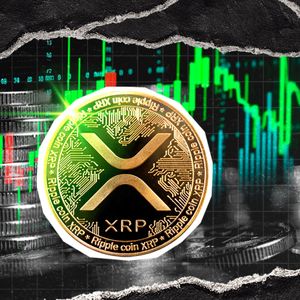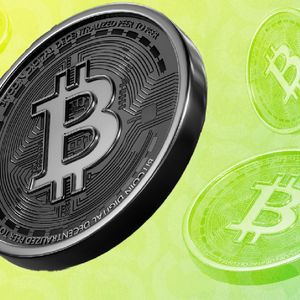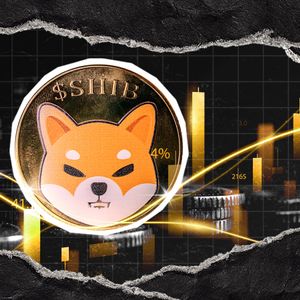Bitcoin’s sharp drop toward $93,000 triggered fresh debate across the crypto space, with some analysts and executives blaming a mix of whale selling, ETF outflows, tightening liquidity, and rising geopolitical uncertainty. At the same time, Rich Dad Poor Dad author Robert Kiyosaki says he’s unfazed by the downturn, and argued that a global cash shortage—not fading conviction—is driving the sell-off. He expects governments to eventually respond with massive money printing, which he believes will ultimately boost the value of assets like Bitcoin, gold, and Ethereum. Bitcoin Slump Raises Questions Bitcoin’s slide toward $93,000 over the weekend led to fresh debate across the industry, and executives and analysts are pointing to a mix of structural and macroeconomic factors driving the downturn. The drop marked a year-to-date low and dragged the overall crypto market capitalization down from $3.7 trillion to $3.2 trillion in just one week. Crypto market cap over the past month (Source: CoinMarketCap ) Industry leaders say the pullback isn’t the result of a single shock, but rather a confluence of pressures hitting simultaneously. Ryan McMillin, CIO of Merkle Tree Capital, recently said in an interview that long-term Bitcoin holders seem to be “finally cashing in after an extraordinary run,” releasing large amounts of old supply into the market just as liquidity thins out. He added that spot Bitcoin ETFs, which were major accumulators earlier in the year, have now flipped to net outflows, removing one of the market’s most reliable sources of demand at a time when global sentiment grew more risk-averse and expectations for rate cuts have been delayed. Binance Australia and New Zealand GM Matt Poblocki said that the volatility proves that crypto is still deeply tied to global macro and political events. Geopolitical tensions, rate-sensitive tech valuations and uncertainty across major economies continue to weigh on risk assets broadly. Banxa CEO Holger Arians agreed, and pointed out that markets have been running hot while the world faces multiple unresolved crises, making a risk-off correction “almost inevitable” after a year of sustained optimism. Other executives shared even more theories. Bitwise CEO Hunter Horsley suggested that the industry’s longstanding four-year cycle narrative may be fueling self-fulfilling panic among traders. Fundstrat’s Tom Lee speculated that market makers with weakened balance sheets may be facing targeted liquidity stress, which could potentially accelerate the downturn. Still, many analysts argue that the correction is not only normal, but also healthy. Poblocki explained that retail investors are not abandoning the market, but are rotating into Bitcoin and Ethereum rather than exiting entirely, which could be a sign of improving investor maturity. ETF activity, while softer, has not seen major redemptions, and institutional involvement is also still high. Arians added that despite the price weakness, crypto’s underlying fundamentals continue to improve, pointing to rising stablecoin volumes, sustained on-chain activity and growing developer momentum. He argued that the infrastructure now being built is laying the groundwork for the next expansion cycle. Overall, while fear has resurfaced, the consensus among industry leaders is that the long-term trajectory is still intact, and that the current slump may ultimately prove to be another temporary chapter in crypto’s evolution. Kiyosaki Holds Firm as Markets Drop Meanwhile, Robert Kiyosaki, the author of Rich Dad Poor Dad, told his followers on X that he has no plans to sell his Bitcoin or gold. While many investors are reacting to sharp price drops, Kiyosaki argued that the true driver behind the current sell-off is not fear, speculation, or shifting narratives, but something far more fundamental — a global shortage of cash. In a Saturday post , he said that “the everything bubbles are bursting,” and framed the decline across markets as a function of liquidity stress rather than weakened long-term conviction. He agreed with economist Lawrence Lepard’s thesis that governments overwhelmed by debt will eventually be forced into large-scale money creation to stabilize their economies. According to Kiyosaki, this upcoming phase — which he refers to as “The Big Print” — will severely devalue fiat currencies while boosting hard assets like gold, silver, Bitcoin, and Ethereum. Kiyosaki added that many people currently selling are doing so because they need cash, not because they have lost faith in their investments. For those who truly do require liquidity, he suggested selling a portion of their assets but also explained that panic selling due to market volatility is rarely rational. He reiterated that while he won’t be selling, he understands “many need cash.” In a follow-up post , Kiyosaki again reaffirmed his long-term bullishness on Bitcoin. He said he intends to buy more once the market finishes correcting, and reminded his audience that Bitcoin’s fixed supply of 21 million coins is still one of its strongest value propositions. He also used the moment to encourage followers to build “Cashflow Clubs,” based on his educational board game, and argued that group learning can help people avoid costly mistakes during turbulent market periods.
 Pundit: XRP Haters Are Going to Hate This
Pundit: XRP Haters Are Going to Hate This ChatGPT investment predictions for 2026
ChatGPT investment predictions for 2026








